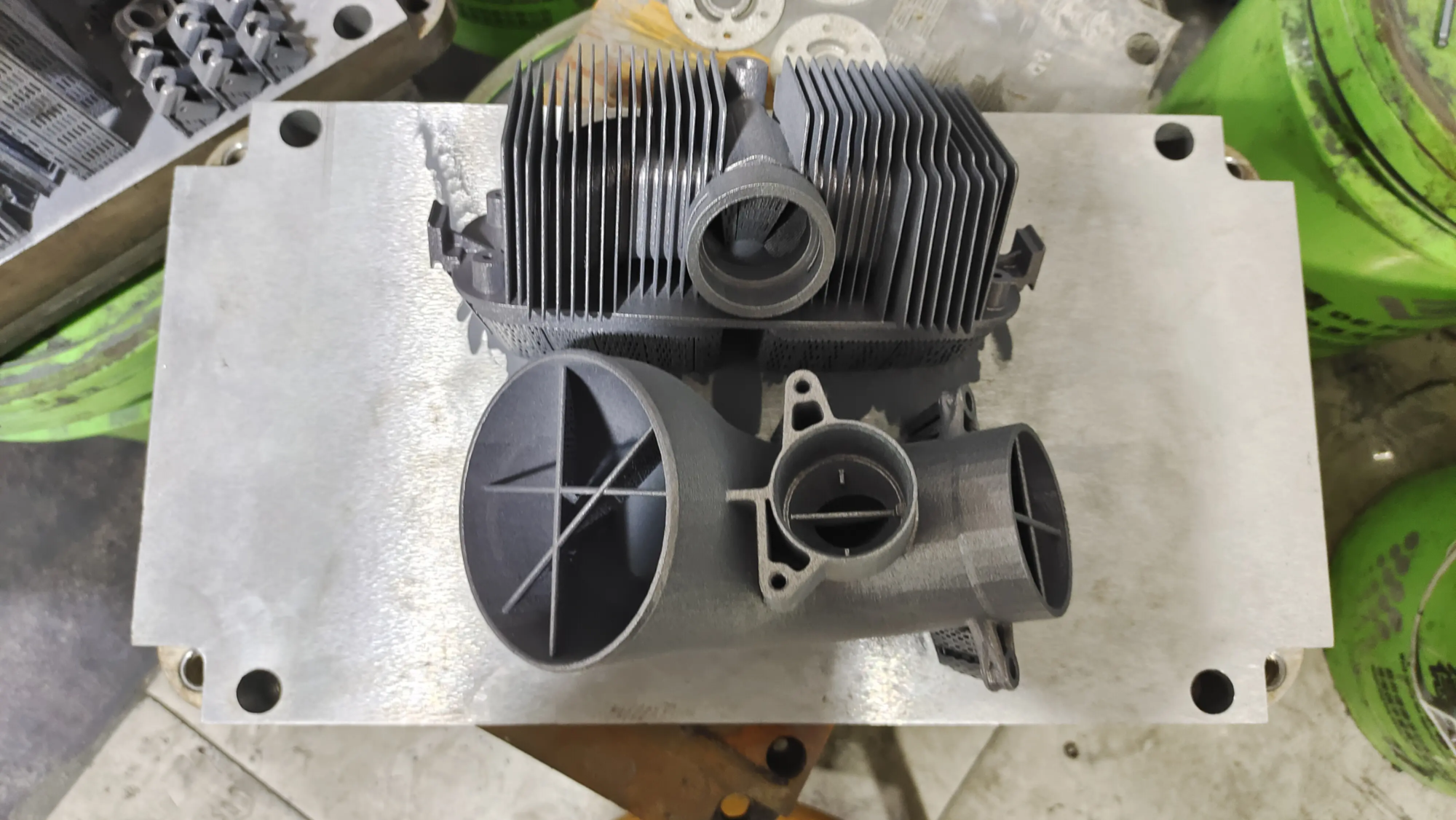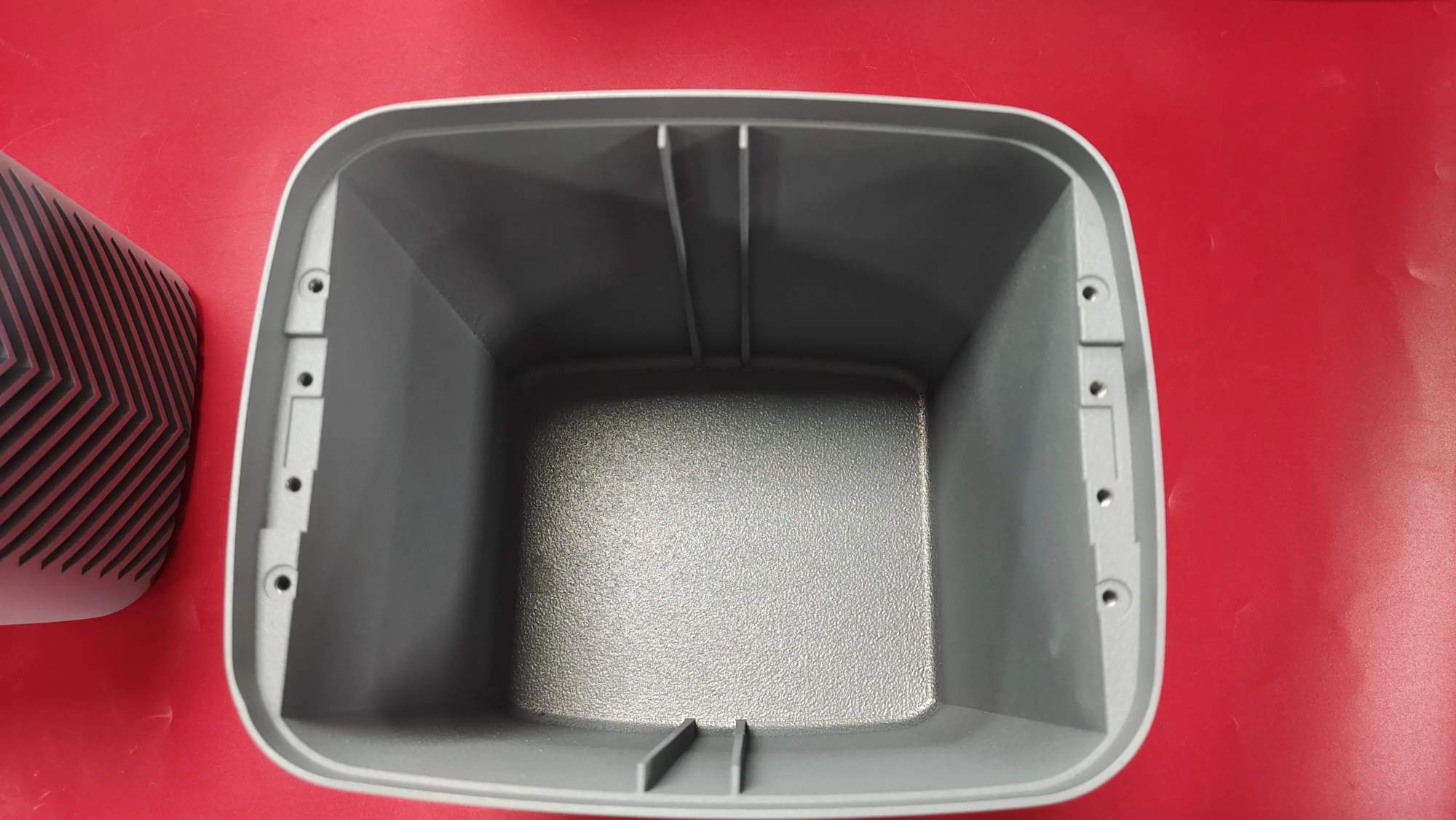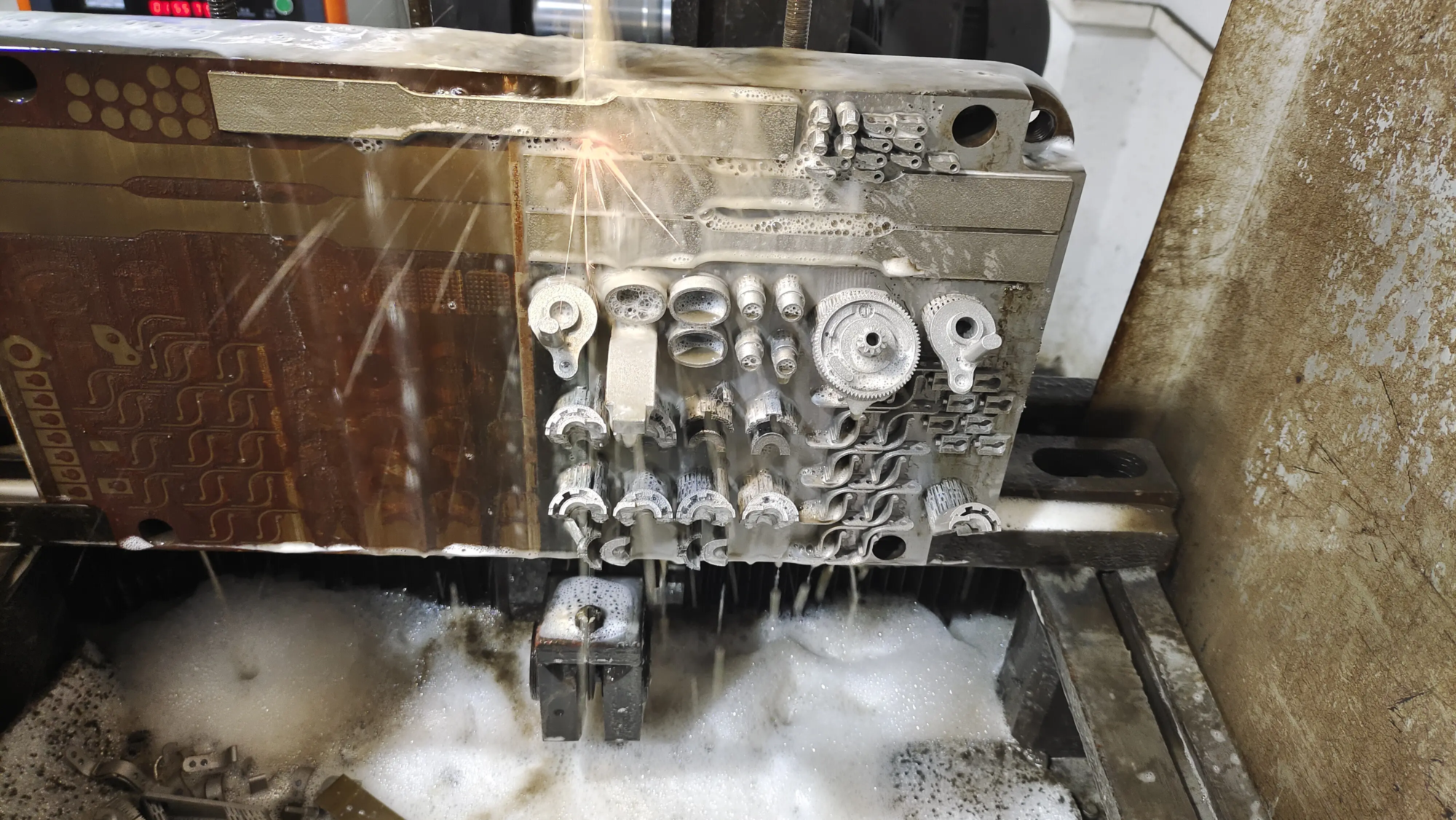Your final guide to making halo armor with 3D printing
The iconic Mjolnir armor worn by the Chief Master is not just science fiction. Thanks to the explosive growth of 3D printing, creating your own super-detailed halo suit has become an exciting reality for role-players, collectors and gamers. This guide delves into the entire process (from digital concepts to tangible armor) to precise, materials science and achieve professional-level results, especially the effects of high-performance metals.
Journey Begins: Design and Preparation
- Purchase blueprint: Your project starts digitally. There are many accurate halo armor models (ODST, Spartan, Mark IV, etc.) on platforms such as Thingiverse, Myminifactory or a dedicated role-playing community. Make sure the file is scaled correctly (please consider "Armor size" Tutorial) and manifold (watertight). For truly unique commissions, professional CAD designers can create custom pieces.
- Slice for perfection: Slicing software (CURA, PRUSASLICER, SIMPLIFY3D) converts your 3D model into one-layer instructions. For complex armor components, please pay attention to consistent attention:
- support: It is crucial for overhanging. Automatic support often requires manual improvements to minimize scars and material waste.
- Layer height: The thinner layer (0.1mm -0.2mm) produces a smoother surface, but greatly increases printing time.
- Fill density: 15-30% is usually enough to accommodate lightweight, wearable parts; higher fillers increase stiffness when needed.
- Wall thickness: Ensure adequate structural integrity (using 3-5 surroundings is usually recommended).
Material Problems: Plastics, Resin or Metals
Your choice greatly affects aesthetics, durability, weight and cost:
- PLA/PLA+: First choice for beginners: Affordable, easy to print, lightweight, wide color range. Disadvantages: brittleness under impact, high temperature distortion.
- PETG: Stronger, more flexible, heat/gas resistant than PLA. Printing is slightly tricky, but provides a good balance.
- Resin (SLA/DLP): Unrivaled details, smooth surface (minimum post-treatment). Perfect for helmets, buckles, intricate signs. It requires careful treatment (toxic liquid, after healing) and is usually more brittle than high temperature plastics.
- Late Thermoplastics (nylon, ABS, polycarbonate): Advantages of functional gears, strength, heat resistance and durability. Advanced printers are required (heater extruders, enclosed chambers).
- Metal: This is where professional competence completely changes the possibility. Such as:
- Aluminum alloy (ALSI10MG): Lightweight, strong, excellent thermal properties. Ideal structural components or heat-resistant components.
- Stainless steel (316L, 17-4PH): Strong and corrosion resistant. Used for heavy element or armor buckle.
- Titanium (Ti6al4v): Final strength to weight ratio, biocompatible. Advanced choice for top projects.
Why professional metal printing? Techniques such as selective laser melting (SLM) fuse metal powder layer by layer produce near-density functional parts. A company specializing in this technology (Greatfor example) possess the expertise and industrial-grade equipment needed to achieve complex geometry, fine details and materials needed for armor, which is not only props, but also durable engineering. They solve complex problems such as residual stress management and inherent distortions of large metal prints.
Printing process: Execute precisely
- Material-specific settings: Strict calibration is not negotiable. Temperature control, bed adhesion, speed, cooling – Each material requires a tailored approach, especially metals and SLM systems that require inert gas atmospheres.
- Patience is an alumni: Armored parts are usually large and complex. Shoulders, chest plates, or helmets each can take dozens of hours. Ensure a stable printing environment and carry out strategic monitoring.
Make it come to life: Expert post-processing
Original prints need improvements to achieve the signature halo aesthetic:
- Support removal: Caution is key – use rinsing cutting machine, pliers, heat (care). Metal support requires specialized cutting/grinding tools.
- Perfect surface:
- Grinding: Progressive grinding is basic (start ~120 grit, finish >600 grit). Resin usually requires less.
- Fill and start: Use car filler putty for layers/seaters. High construction fill primer horizontal surface.
- Gap filling: Super glue/soda or epoxy putty shovel cracks.
- Professionally completed: Expert Services provide shooting (for metal), media polishing (metal/resin), CNC grade smoothing, vapor smoothing (specific plastics), effectively achieving showroom-ready surfaces.
- Assembly and painting:
- It has strong industrial adhesives and other adhesive components such as epoxy resins.
- Use quick fit connections or internal strap systems such as nylon webbing and buckles for comfort.
- painting: Again (sandable car primer). Use the base color (blaster for the best, smoothest results), add weathering/wear effects with a wash/dry brush. A matte car transparent jacket is essential for protection. For metal finishes on plastic, the black on Alclad Chrome of Gloss Black offers amazing results. Professional metal parts can also be oxidized, powder coated or professionally painted for unparalleled durability.
Why work with professionals like Greatlight?
Despite the appeal of DIY printing, professional services offer game-changing advantages for demanding projects like Halo Armor:
- Material Access and Expertise: Access aerospace grade aluminum, stainless steel, titanium and specialty plastics such as PEEK (such as Peek).
- Final accuracy: Industrial SLM/SLS/FDM systems provide accurate accuracy and resolution far beyond hobby machines.
- Time and risk reduction: From slicer adjustment to prevent printing failures, professionals can handle complexity.
- All-in-one completion: Seamless switching from original printing to polishing, primer (or anodized/painted) components.
- Structural integrity: Crucial for metal parts or load-bearing joints – engineers ensure that the model is robust.
exist GreatWe leverage our advanced SLM metal printers and deep production technology to skillfully solve the toughest rapid prototype challenges. We specialize in unparalleled custom metal parts (from aluminum to titanium), plus a comprehensive one-stop after-treatment service such as precision machining, polishing, heat treatment and coatings. Our fast turnaround and competitive pricing make high-fidelity, durable halo armor (or any sophisticated custom project) accessible. [A not-so-subtle nudge: Customize your precision metal armor parts with GreatLight now!]
in conclusion
3D printing your halo armor will turn impossible hands-on into exciting hands-on projects. Whether it’s carefully printed in PETG at home or aerospace-grade titanium parts used by experts like Greatlight, the key is planning, patience and leveraging the right expertise. Understand the nuances of design preparation, material selection, and advanced post-processing (especially for demanding materials) to unlock results worthy of Spartan deployment. Embrace the process, respect technology, and soon you will have your own halo universe.
Frequently Asked Questions about 3D Printed Halo Armor (FAQ)
Q1: Is 3D printing a new set of halo armor suitable for beginners?
- one: The complete suit is advanced! It is wise to start with smaller pieces in PLA/PETG (forearm guard, thigh pads, pistol replicas). Handle the helmet later. Complex geometry, large printing, post-processing and assembly require a lot of time, tools and learning. Consider outsourcing complex parts.
Q2: How much does it usually cost to print a complete suit 3D?
- one: Costs vary widely:
- Plastic (DIY): $200- $600+ (Filaments, Consumables, Secondary Tools).
- Resin (DIY): $400- $1000+ (requires more resin).
- Professional Plastics/Metals: $1,000- $5,000+ (higher costs reflect quality, detail, strength, metal and other materials, complete post-processing). Metal parts are advanced due to material cost and SLM complexity.
Q3: How to get the correct size of halo armor pattern?
- one: If worn, use a reference measurement for clothing/suit. Software like Armorsmith Studio helps you to match your standard models to your measurements. Carefully measure twice (breast, waist, hips, Inseam, height, shoulder width). Print the proportional test pieces and then perform large parts.
Question 4: Can I really wear 3D printed metal armor? Is it safe?
- one: Professionally printed SLM metal armored parts Absolutely wearable – Materials such as Alsi10mg or even titanium alloys may be lightweight and can be bulky. The finish removes sharp edges. Ensure that there is enough filling/belt inside for comfort and weight distribution. Complex designs should involve consulting at pressure points.
Q5: How heavy is the last metal halo armor?
- one: It depends greatly on the material and thickness. Professional SLM printing allows for optimized hollow structures with strategic thickness. A well-designed aluminum garment may be lighter It is even more powerful at the same time. Titanium is lighter than aluminum, but is usually more expensive. Patent-optimized complete metal suits may be managed in a short period of time (such as meeting walks).
Q6: Which post-processing is crucial for smoothing "In the game" look?
- one: Essentials: Thoroughly sand (gradually through the sand), fill primer and spotted putty, more sanding, fine surface cleaning, premium primer paint on the front of the colored jacket, and a protective final clear coating (satin/matte). For plastics, the vapor is smooth (odor smoothing layer lines). The quality of professional finishing is close to quality, especially on metals.
Question 7: Why use a company like Greatlight instead of printing yourself?
- one: Professionals provide precise, advanced materials and technologies (such as SLM metal printers that are not available to consumers) that provide guaranteed structural integrity for complex or bearing parts, expert problem solving for difficult prints, and time-saving integrated decor (polishing, coating). For high-risk projects that require quality results, strength or true metal authenticity, their expertise is invaluable.
Question 8: What kind of reinforcements do plastic armor need?
- one: Layers of fiberglass cloth and epoxy resin are used on top in High stress fragments (helmet, joint department, chest). Steel/metric inserts provide strong threads for bolts/buckles. Metal epoxy putty enhances the adhesion point.





